Advertisements
Advertisements
प्रश्न
Explain briefly seven types of unit cells.
उत्तर
Seven types of unit cells:
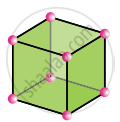
Cubic
a = b = c
α = β = γ = 90°
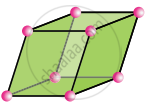
Rhombohedral
a = b = c
α = β = γ ≠ 90°
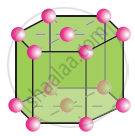
Hexagonal
a = b ≠ c
α = β = 90°, γ = 120°

Tetragonal
a = b ≠ c
α = β = γ = 90°
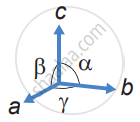
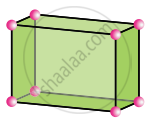
Orthorhombic
a ≠ b ≠ c
α = β = γ = 90°
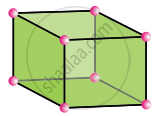
Monoclinic
a ≠ b ≠ c
α = γ = 90°, β ≠ 90°
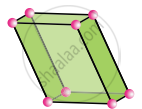
Triclinic
a ≠ b ≠ c
α ≠ β ≠ γ ≠ 90°
- Cubic – NaCl
- Rhombohedral – Cinnabar Cubic
- Hexagonal – ZnO
- Tetragonal – TiO2
- Orthorhombic – BaSO4
- Monoclinic – PbCrO4
- Triclinic – H3BO3
They differ in the arrangements of their crystallographic axes and angles.
Corresponding to the above seven, Bravis defined 14 possible crystal systems as shown in the figure.
APPEARS IN
संबंधित प्रश्न
CsCl has bcc arrangement, its unit cell edge length is 400 pm, it's inter atomic distance is
The vacant space in bcc lattice unit cell is ____________.
The fraction of total volume occupied by the atoms in a simple cubic is
If ‘a’ stands for the edge length of the cubic system; sc, bcc, and fcc. Then the ratio of radii of spheres in these systems will be respectively.
If ‘a’ is the length of the side of the cube, the distance between the body centered atom and one corner atom in the cube will be
Potassium has a bcc structure with nearest neighbor distance 4.52 A0. its atomic weight is 39. its density will be
Calculate the number of atoms in a fcc unit cell.
What is the coordination number of atoms in a bcc structure?
An element has bcc structure with a cell edge of 288 pm. the density of the element is 7.2 g cm−3. how many atoms are present in 208 g of the element.
Sodium metal crystallizes in bcc structure with the edge length of the unit cell 4.3 × 10−8 cm. calculate the radius of a sodium atom.
